Homemade Bagels {Step-by-Step}
Looking for homemade, from-scratch bagels that are as delicious as store bought? Check out this post for step-by-step instructions!
I have two main goals in life:
1) Raise non-smelly, sensitive, caring boys and 2) help everyone conquer making and baking yeast breads at home.
I love to make bread (in any form) and more than that, I love to eat it.

There is something about fresh bread that just does me in. And when I figure out I can make specialty breads at home that are just as delicious for a fraction of the cost…well, I’m sunk.
Over the next few weeks, I’ll be sharing some unique bread recipes that don’t necessarily follow the parameters of typical roll/bread dough. I’ll be including in-depth step-by-step instructions so you can make them right along with me. I am not a bread-making expert by any means, so let me emphasize that if I can make these, you can, too!
Today is bagel day. I wish every day could be bagel day since I love bagels oh so very much.
I have another recipe for bagels residing on this site. They are fantastic. And so is the recipe below. They both come from King Arthur Flour – the main difference in the recipes being that the old recipe requires a starter (flour, water, yeast mixed the night before and left to bubble overnight) which creates a bit more flavor in the bagels.
The recipe I’m sharing today creates equally delicious bagels but without having to think too far ahead. (Incidentally, you can use the step-by-step guide with either recipe, especially for the shaping/boiling part.)
These bagels are dense and chewy and so magnificent with a slather of cream cheese that it is unspeakable. I always double the batch so we can have some to freeze and eat for breakfast/snacks. Asiago bagels are my dream bagel of choice and the kind pictured in this post, but the options are endless.
Who knew bagels could be so easy and fun to make at home (my kids love to help with the process – especially poking the holes part)?
I’m not sure that I can count the success of goal #1 yet, but if even one of you makes these and loves them as much as I do…well, I’ll consider my life mostly complete.

One Year Ago: Tender Pork Chops with Apples and Onions
Two Years Ago: Baby, Baby Cupcakes
Three Years Ago: Tacos Supreme

Homemade Bagels
Ingredients
Dough:
- 1 tablespoon instant yeast
- 4 cups (568 g) bread flour (see note for variations)
- 2 teaspoons salt
- 1 tablespoon brown sugar
- 1 ½ cups warm water
Water Bath:
- 2 quarts water
- 2 tablespoons brown sugar
- 1 tablespoon granulated sugar
Instructions
- Manual/Mixer Method: To make this dough by hand or in a mixer, combine all of the dough ingredients and knead vigorously, by hand for 10 to 15 minutes, or by machine on medium-low speed for about 10 minutes. Since a high-protein bread flour is used here (or a combination of all-purpose flour and gluten), it takes a bit more effort and time to develop the gluten. The dough will be stiffer than other soft yeast doughs but will still be pliable and smooth once it has finished kneading. It should be stiff and floured enough not to leave much residue on your fingers after pinching a piece but not so stiff that you can’t easily pinch off pieces of dough and work with it. Place the dough in a lightly greased bowl and cover with lightly greased plastic wrap. Set it aside to rise for 1 to 1 1/2 hours until it is noticeably puffy.
- Bread Machine Method: Place all of the dough ingredients in the pan of the machine, program the machine for Dough or Manual, and press Start. Check the dough after 10 minutes; it should be quite stiff, and won’t have formed a smooth ball. The dough will feel quite firm when you poke your finger into it. Allow the machine to complete its cycle, then complete bagels as instructed below.
- Transfer the puffed/risen dough to a work surface and divide the dough into eight equal pieces. Working with one piece at a time, roll it into a smooth, round ball. Place the balls on a lined or lightly greased baking tray and cover lightly. Let them rest for 30 minutes. They’ll puff up very slightly.
- Once they have rested, one-by-one, use your thumb to poke a hole through the center of each ball then twirl the dough and use your other fingers to stretch the hole until it is about 1 to 2 inches in diameter. The entire bagel will be around 4 inches across. Place the shaped bagels on a lined baking tray (the same one that you’ll bake them on).
- Prepare the water bath by heating the water and sugars to a very gentle boil in a large, wide-diameter pan. You can use a large pot or a deep straight-edged skillet. Preheat your oven to 425°F.
- Transfer the bagels, three or four at a time, to the simmering water. Increase the heat under the pan to bring the water back up to a gently simmering boil, if necessary. Cook the bagels for 2 minutes, flip them over using a wide spatula, and cook 1 minute more. Using a wide spatula, carefully remove the bagels from the water and place them back on the baking sheet. Repeat with the remaining bagels.
- Top the bagels with your desired ingredients. If you are going to use a dry topping, such as sesame seeds or poppy seeds, whisk together 1 egg white with 1 tablespoon water and brush each bagel with the mixture before topping heavily with sesame seeds, poppy seeds, etc. If using Asiago or another cheese, there is no need to brush the bagels with an egg white glaze, simply place the shredded cheese on the bagels.
- Bake the bagels for 20 to 25 minutes, or until they’re as deep brown as you like. Remove the bagels from the oven, and cool completely on a wire rack.
- I only bake one sheet of bagels at a time, even though I usually double the batch and have four sheets of bagels ready to be baked. The bagels that have been boiled, placed on the baking pans, topped with cheese and then sat and rested for 20-30 minutes while the other bagels baked – well…they actually turned out more rounded and golden brown than the ones that were baked right away. So there is no harm in boiling all the bagels at once and letting them hang out on the baking sheets while the other bagels bake.
Notes
Recommended Products
Recipe Source: adapted slightly and expounded upon from King Arthur Flour


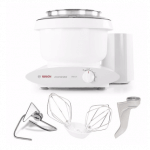
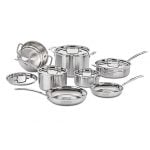
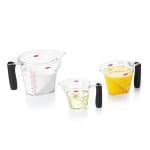
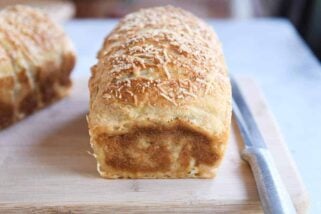
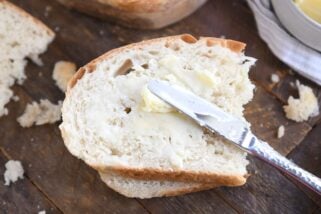
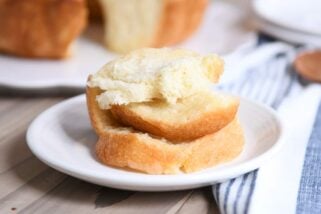
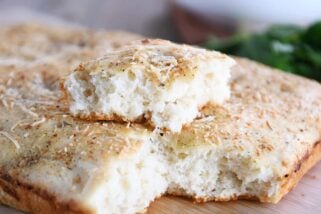
I love this recipe! I’ve added jalapeños haven’t tried the cheese, but this recipe turns out awesome every time! Thank you🥰
Hi Mel. I have made these bagels often and they are indeed delicious. I recently made them and attempted to do a “slow rise in the fridge overnight” but I must have done something wrong because the bagels turned out to be very small. Can you please expand on the process of a slow rise?
Did you refrigerate the dough as one big mass or did you shape the bagels and refrigerate them that way?
Hi Mel. Can you explain more about how to proceed after leaving in the fridge overnight? Tia!
If you’ve refrigerated the dough overnight, let it rest out of the fridge for an hour or so to shape the bagels. If you’ve refrigerated the shaped bagels overnight, you can proceed with the boiling step per the recipe.
Do you let the dough rise first for an hour before it gets refrigerated or is all the rising done just in the fridge?
I usually pop the dough right in the refrigerator without letting it rise. It should rise a bit in the fridge…but if it hasn’t risen fully, it may help to take it out of the fridge and let it come to room temp and continue to rise until puffy. A lot depends on the exact temperature of your fridge and the temp of the dough when it goes into the fridge.